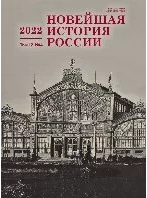«Миф Эльзы Брендстрём» и его влияние на историю военнопленных стран Четверного союза в России
The Myth of Elsa Brandström and its Influence on the History of Prisoners of War of the Countries of the Quadruple Alliance in Russia
Author(s): Vladimir A. ShalamovSubject(s): Cultural history, Human Rights and Humanitarian Law, Military history, Political history, Social history, Studies in violence and power, Pre-WW I & WW I (1900 -1919), Identity of Collectives, Peace and Conflict Studies
Published by: Издательство Исторического факультета СПбГУ
Keywords: Red Cross; Sweden; World War I; Civil War; Russia; POWs;
Summary/Abstract: During the First World War, prisoners of war from the countries of the Quadruple Alliance were distributed among concentration camps throughout the Russian Empire. At first, due to the country’s unpreparedness to receive such a large number of captives, their conditions of detention were unsatisfactory. Neutral organizations come to their aid. Elsa Brandstrom, a sister of mercy of the Swedish Red Cross, is best known. She was the daughter of a Swedish envoy to Russia, who was distinguished by pro-German views. During the war years, thanks to her tireless energy, germanophilia and russophobia, she gained extraordinary popularity in the German environment. When the civil war broke out in eastern Russia, Elsa Brandstrom drove across the front line with large funds intended to help prisoners of war. After returning to her homeland, she published a memoir for charitable purposes, in which she summarized all her experience of the war. Contemporaries perceived her book as the main source on the history of captivity in Russia. Her altruism and desire to help former prisoners and after the war created around her a myth of holiness and infallibility. Numerous public appearances and lectures have strengthened her credibility. The lack of critical understanding of her activities and her publications, as well as the lack of opposition from the Russian side, gave rise to the illusion of the correctness of her judgments. Ultimately, this led to a distortion of the history of the stay of prisoners of war of the countries of the Quadruple Alliance in Russia. To date, Russian and foreign historiography has accumulated a sufficient volume of criticism to consider how the “Elsa Brandstrom myth” was formed and what impact it had.
Journal: Новейшая история России
- Issue Year: 12/2022
- Issue No: 41
- Page Range: 1049-1062
- Page Count: 14
- Language: Russian

